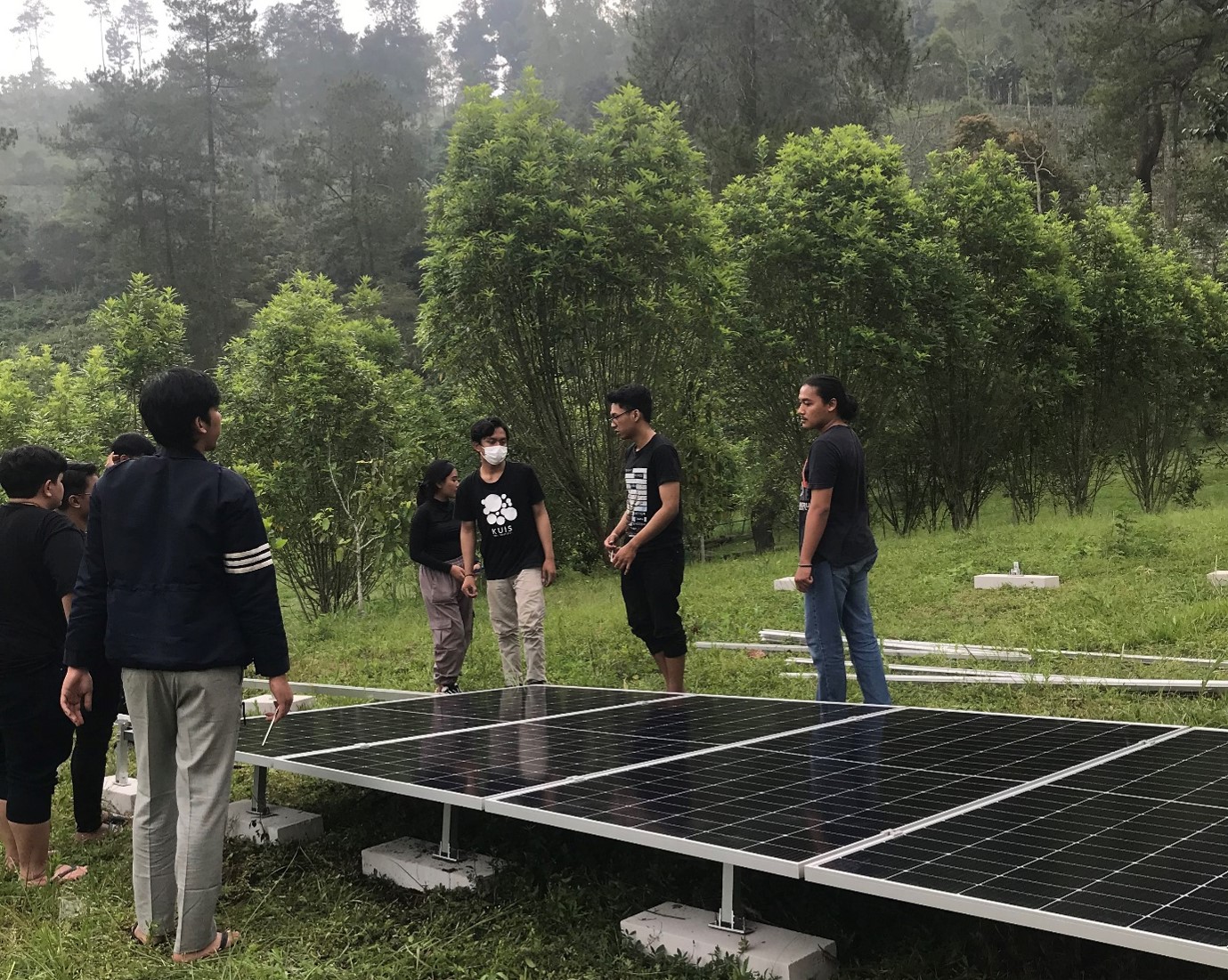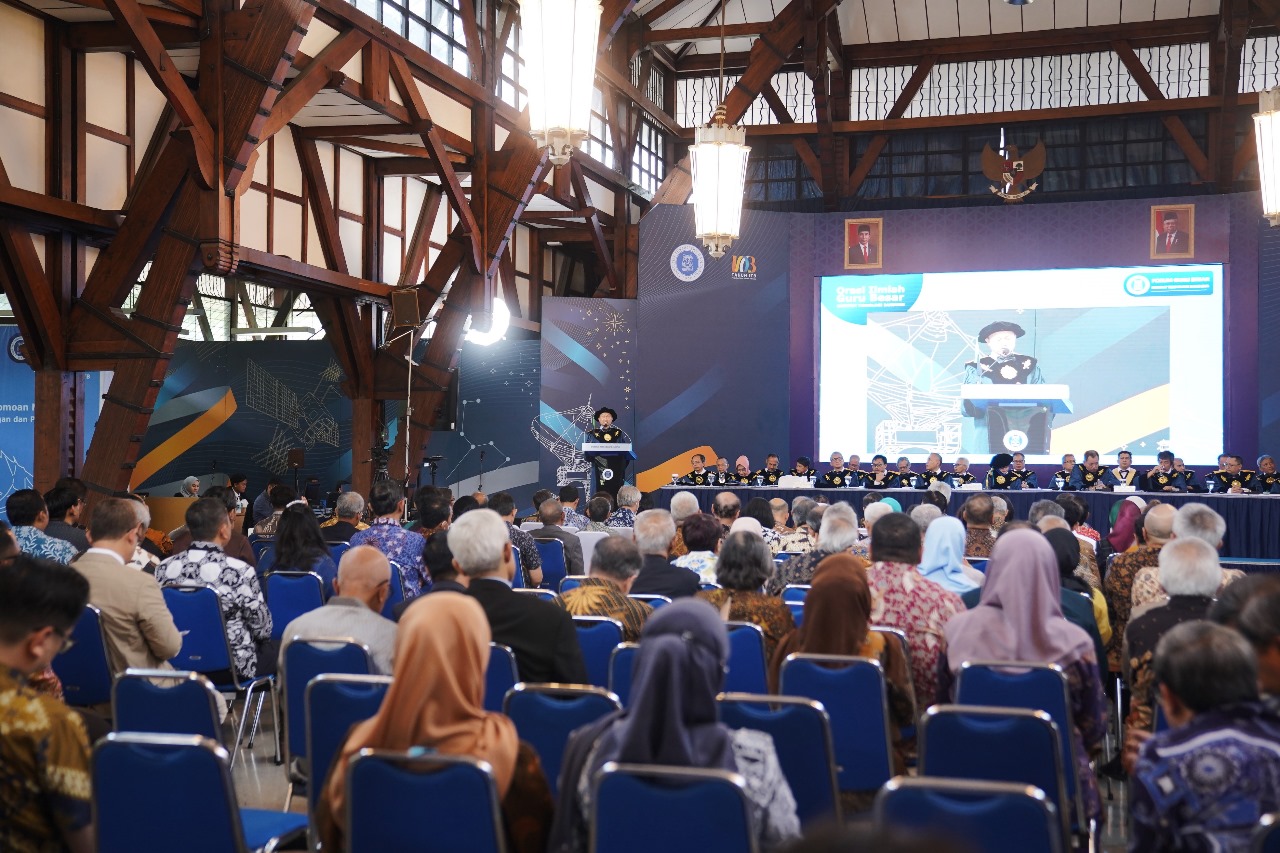Ceramic Industry: Strategic Opportunities for Indonesia Economy
By Teguh Yassi Akasyah
Editor Teguh Yassi Akasyah

 BANDUNG, itb.ac.id - Ceramic industry in Indonesia has been considered very potential to be developed, considering that the number of people and the growth rate more rapid development. At the end 2013, the production of ceramics in Indonesia increased and made significant contributions in order to support economic growth both national and therefore ceramic industry continue to improve the quality and design to seize the domestic market attention and foreigners. However, the improvement still faces obsticle with raw materials for ceramics which is still imported from South Africa, China, and Turkey.
BANDUNG, itb.ac.id - Ceramic industry in Indonesia has been considered very potential to be developed, considering that the number of people and the growth rate more rapid development. At the end 2013, the production of ceramics in Indonesia increased and made significant contributions in order to support economic growth both national and therefore ceramic industry continue to improve the quality and design to seize the domestic market attention and foreigners. However, the improvement still faces obsticle with raw materials for ceramics which is still imported from South Africa, China, and Turkey. As the follow-up of the problem, Students Association of Material Engineering (MTM) ITB worked together with Indonesian Students Association of Metallurgy and Material (PM3I) held a seminar that discussed about the dynamics ceramic industry competitiveness. A seminar titled "The Chance for Ceramic Industry as a Strategic Industry in Indonesia" was held on Saturday (03/01/14) in seminar room, Faculty of Mechanical Engineering and Aerospace (FTMD) ITB. In the discussion, presented by Dr. Ir. Aditianto Ramelan Engineering Study Program (Chairman Material ITB), Sopan Sopian (Research and Development Manager, PT Goose Power), and Harry Rayadi (Human Resources Officer, PT Keramika Indonesia Association). This seminar was a series of events Metaloscope 2014 which is an annual event MTM ITB.
Ceramic Industry Competitiveness
Ceramic industry which consists of floor (tile, house equipment (tableware), and roof has given a significant contribution in supporting national development through the provision for domestic demand, the acquisition and foreign exchange reserves. Ceramic industry in Indonesia has grown well for more than 30 years and has become one of the industry heavyweights. In the future, ceramic industry national in the long-term will be quite well in line with market growth in the country that keeps on advancing, especially floor tiles production because it is supported by development growth both property or residential. Indonesia has also succeeded dominated the market South East Asia level for quality of our ceramic.
Problem on National Ceramic Processing
In the production, ceramic industry needed raw materials such as clay, feldspar, zirconium silicate, talc, sand silika, and dolomite. Raw material is required a lot of with the quality that appropriate. This has become an obstacle on production of ceramic that is not well supported by local producers. This is the reason why ceramic industry still imports, especially for feldspar and zirconium silicate with the high price, even though Indonesia has all of these materials deep down the earth. Feldsper populations are scattered throughout the mountains in Sumatra and Java , while zirconium silicate there are in Kalimantan. Import prices for zirconium silicate reached Rp 18,000 per kg are imported from South Africa and Australia, values are very high compared with the price of selling in Indonesia, which was only Rp 2,500 per kg, seeing that this material is exported from Kalimantan to China and India. This condition happened because no mineral processing after the ore was mined in Indonesia, so that the industry tend to buy materials in a ready-to-use condition.
 In addition, ceramic industry Indonesia has suffered a problem to amount of energy that is used. As an energy source, the industry uses gas, it is unfortunate that supply of gas by National Gas Company (PGN) is still relatively low, this condition means that the industry was not supporting by energy supplier. According to Sopan Sopian, this condition must be supported by the development alternative energy that can change a source of energy, like gas. Limited availability gas also causes the producers and inverstors were not interesting to build a new production units. The manpower is also needed to improve the quality of national ceramics, so our production will better than ceramics imports from China , India, and others.
In addition, ceramic industry Indonesia has suffered a problem to amount of energy that is used. As an energy source, the industry uses gas, it is unfortunate that supply of gas by National Gas Company (PGN) is still relatively low, this condition means that the industry was not supporting by energy supplier. According to Sopan Sopian, this condition must be supported by the development alternative energy that can change a source of energy, like gas. Limited availability gas also causes the producers and inverstors were not interesting to build a new production units. The manpower is also needed to improve the quality of national ceramics, so our production will better than ceramics imports from China , India, and others.
Achievements of National Ceramic Industry
On the other hand , ceramic industry has managed to contribute in order to bring this country as one of good producers in this world. The reason is, in late of 2013, the industry has ranked as the best producers of ceramic after China , India, Italy, Brazil, and Spain for the production of tile. It caused by the rising of infrastructure and industrial buildings deman. 20% of production capacity ceramic tile rose than in 2012. As an expert in the field ceramics, Dr. Ir. Aditianto Ramelan added that ceramic industry was a very potential market if it could be supported by raw materials, technology and human resources. "Look at the progress ceramic industry that is growing, Indonesia has the potential to be dominate more in the ceramic market in world. Therefore, it needs human resources that has a high-quality to grow up the potential," said Aditianto.

.jpg)
.png)
.jpg)
.jpg)
.jpg)



